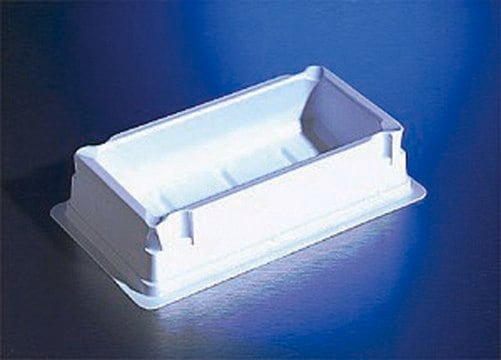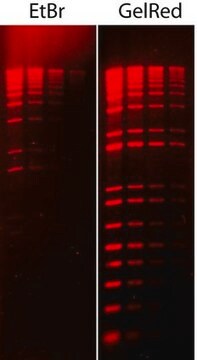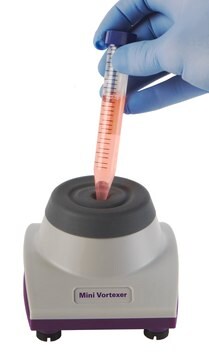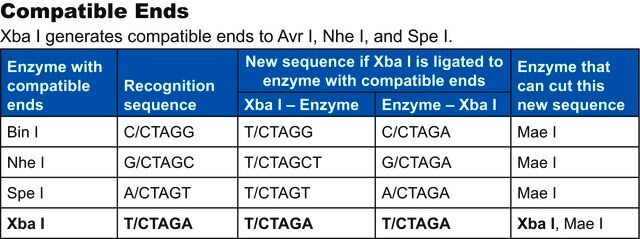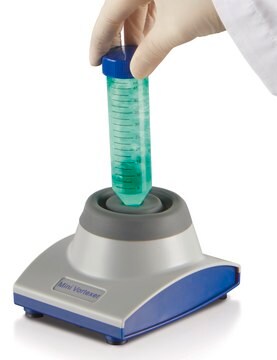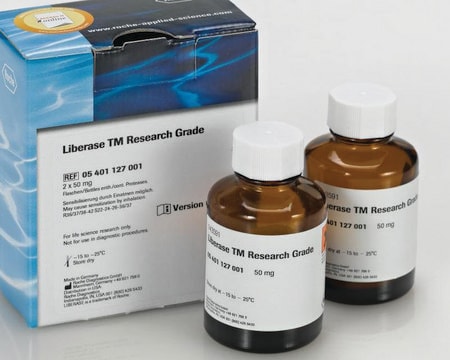DPNI-RO
Roche
Dpn I
from Diplococcus pneumoniae
About This Item
Polecane produkty
pochodzenie biologiczne
bacterial (Diplococcus pneumoniae)
Poziom jakości
Formularz
solution
opakowanie
pkg of 1,000 U (10742988001 [10 U/μl])
pkg of 200 U (10742970001 [10 U/μl])
producent / nazwa handlowa
Roche
Parametry
37 °C optimum reaction temp.
temp. przechowywania
−20°C
Opis ogólny
The enzyme is an isoschizomer to Bsp143 I, Dpn II, Mbo I, Nde II and Sau3A I.
Methylation sensitivity
The enzyme is only inhibited by the occurrence of 5-methylcytosine at the indicated site (*) if no 6-methyladenine is present.
Typical ligation and recutting assay
Dpn I fragments obtained by complete digestion of 1μg pBR322 DNA are ligated for 16 hours at +4°C with 1U T4 DNA Ligase in 10μl buffer that contains 66mM Tris-HCl, 5mM MgCl2, 5mM Dithiothreitol, 1mM ATP, pH 7.5 (at +20°C). The percentages of product that can be ligated and subsequently recut with Dpn I (yielding the typical pattern of pBR322 × Dpn I fragments) are stated under "Lig" and "Rec" in the certificate of analysis.
Specyficzność
GmAT*C
Restriction site: GmA↓T*C
GmA↓T*C
Heat inactivation: No inactivation of Dpn I after incubation at 65 °C for 15 minutes.
Zastosowanie
Jakość
1μg pBR322 DNA is incubated for 16 hours in 50μl SuRE/Cut Buffer A with an excess of Dpn I. The number of enzyme units which do not change the enzyme-specific pattern is stated in the certificate of analysis.
Absence of exonuclease activity
Approximately 5μg [3H] labeled calf thymus DNA are incubated with 3μl Dpn I for 4 hours at +37°C in a total volume of 100μl 50mM Tris-HCl, 10mM MgCl2, 1mM Dithioerythritol, pH approximately 7.5. Under these conditions, no release of radioactivity is detectable, as stated in the certificate of analysis.
Profil DNA
- λ: 116
- φX174: 0
- Ad2: 87
- M13mp7: 8
- pBR322: 22
- pBR328: 27
- pUC18: 15
- SV40: 8
Definicja jednostki
Komentarz do analizy
The buffer in bold is recommended for optimal activity
- A: 100%
- B: 75-100%
- H: 75-100%
- L: 50-75%
- M: 75-100%
Relative activity in PCR mix (Taq DNA Polymerase buffer) is 100%. The PCR mix contained λDNA, primers, 10 mM Tris-HCl (pH 8.3, 20 °C), 50 mM KCl, 1.5 mM MgCl2, 200 μM dNTPs, 2.5 U Taq DNA polymerase. The mix was subjected to 25 amplification cycles.Activity in reaction buffer of Pwo SuperYield DNA Polymerase PCR Mix is 100%; Pwo SuperYield DNA Polymerase PCR Mix is not available in U.S.
Inne uwagi
For life science research only. Not for use in diagnostic procedures.
Tylko elementy zestawu
- Enzyme Solution
- SuRE/Cut Buffer A 10x concentrated
Kod klasy składowania
12 - Non Combustible Liquids
Klasa zagrożenia wodnego (WGK)
WGK 1
Temperatura zapłonu (°F)
does not flash
Temperatura zapłonu (°C)
does not flash
Wybierz jedną z najnowszych wersji:
Masz już ten produkt?
Dokumenty związane z niedawno zakupionymi produktami zostały zamieszczone w Bibliotece dokumentów.
Produkty
Termin "enzym restrykcyjny" wywodzi się z badań nad fagiem λ (fagiem lambda) Enterobacteria w laboratoriach Wernera Arbera i Matthew Meselsona.
The term “Restriction enzyme” originated from the studies of Enterobacteria phage λ (lambda phage) in the laboratories of Werner Arber and Matthew Meselson.
Nasz zespół naukowców ma doświadczenie we wszystkich obszarach badań, w tym w naukach przyrodniczych, materiałoznawstwie, syntezie chemicznej, chromatografii, analityce i wielu innych dziedzinach.
Skontaktuj się z zespołem ds. pomocy technicznej